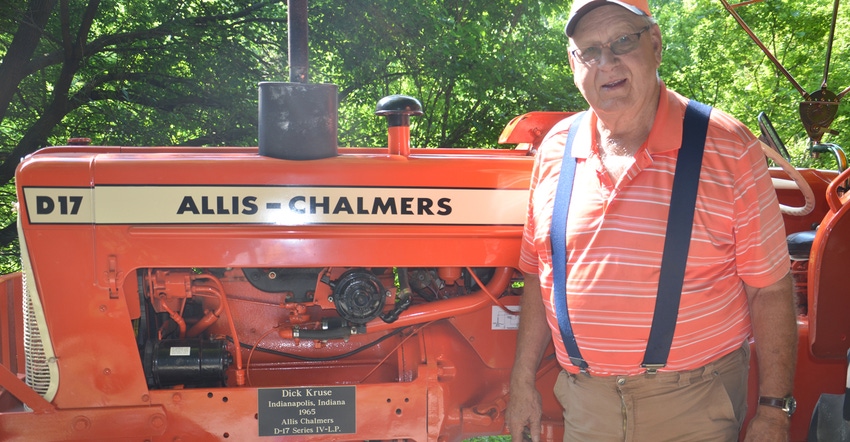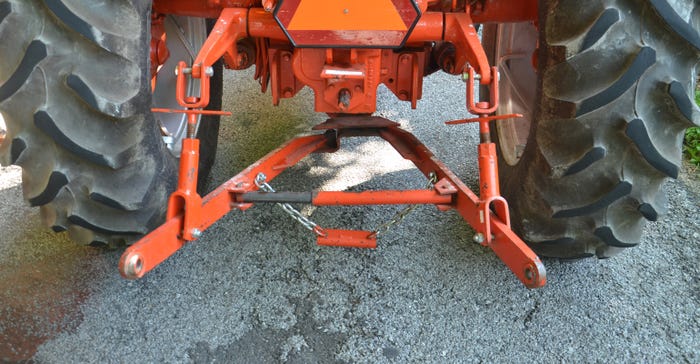September 13, 2018

My brother and I bought an Allis-Chalmers D17 many years ago at a farm sale. We knew it had a Snap-Coupler hitch. We also knew we didn’t have any Snap-Coupler implements. It was a hitch system used only by Allis-Chalmers. We figured we could easily find a three-point hitch to fit our three-point implements, including a plow, grader blade and row crop cultivator.
We were wrong. We eventually found one, drove 60 miles to get it, paid too much for it and weren’t crazy about some of its quirks. It was an aftermarket three-point hitch made for Allis-Chalmers tractors. If you wanted to pull three-point hitch tools that weren’t Allis-Chalmers, it was the only game in town. It worked, but an original equipment manufacturer factory model would likely have been sturdier and not as clumsy to use.
 HITCH TO OTHER BRANDS: If your whole equipment line wasn’t Allis-Chalmers, you needed some way to convert the Snap-Coupler system so you could hook to typical three-point hitch implements. This aftermarket hitch does the job. The top link is not visible, but attaches about where the SMV sign is mounted.
HITCH TO OTHER BRANDS: If your whole equipment line wasn’t Allis-Chalmers, you needed some way to convert the Snap-Coupler system so you could hook to typical three-point hitch implements. This aftermarket hitch does the job. The top link is not visible, but attaches about where the SMV sign is mounted.

So why did many early tractor companies have their own hitch systems? Did they really think people would be so loyal as to only purchase their implements that had the same type of hookup system? Maybe so, but there were other reasons, as well.
Today, people think it took a long time for companies to convert to ISO plug-and-play precision farming computer equipment that will work on most models. And while the conversion isn’t 100% complete, it’s progressed much faster than the conversion to three-point hitches, which stretched over 50 to 60 years, depending on when you decide the era of tractors began.
Wikipedia pinpoints part of the issue: Harry Ferguson, and later, Henry Ford held patents on a three-point hitch design. Until various patents expired, some tractor companies were limited on what they could do. And in the beginning of the tractor age, tractor makers figured people would just pull implements and didn’t need a hitch system to mount an implement directly to the tractor to lift it off the ground.
Various hitches
Here’s a quick rundown of some of the more common hitch systems:
• Three-point hitch. Ferguson first patented it in Britain in 1926. He finally persuaded Ford to introduce it on the Ford 9N in the U.S. in 1939. Other companies looked for alternatives rather than trying to buy rights to use it.
• Allis-Chalmers Snap-Coupler. Those who had a full line of Allis-Chalmers equipment often loved this system. You could back into an implement and go. But only Allis-Chalmers implements were designed to work with it.
• Case Eagle Hitch. Case’s answer was something that looked somewhat like a three-point hitch, but was rigid and didn’t swing. Instead, implements were designed so they could swivel. The hitch also had “claws” that helped hold equipment mounts in place.
• International Fast-Hitch. This was basically a two-point hookup system. The two tractor arms slid over the implement arms and locked in place. It was still offered on the 06 Series, including International 706 tractors in the 1960s.
Comments? Email [email protected].
You May Also Like




